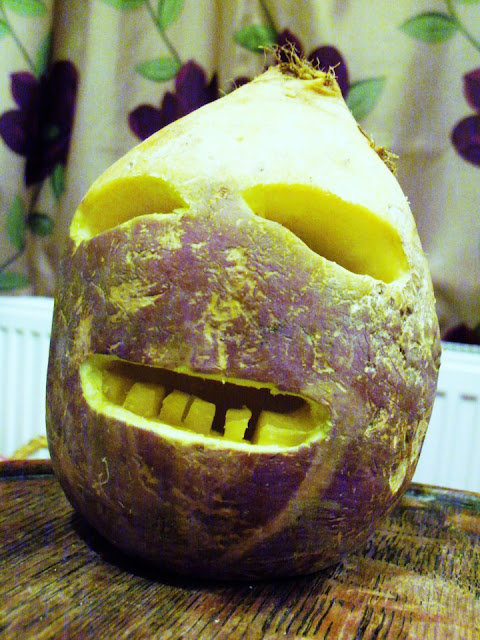The jack-o’-lantern tradition dates back centuries, when people in Ireland decorated turnips, beets, and potatoes to frighten away a mythical character named Stingy Jack. Irish immigrants brought the tradition to America, home of the pumpkin, and the popular fruit became an integral part of Halloween.
According to the folktale, Stingy Jack was having a drink with the Devil but didn’t want to pay for his drink. To fix this problem, he persuaded Satan to transform into a coin that Jack could use. However, Jack decided to put the coin in his pocket, next to a silver cross. This silver cross prevented the Devil from changing back. Jack made a deal that the Devil would not bother him for a year and is not allowed to take his soul if Jack dies.
A year later, Jack meets the Devil again. Jack convinced the Devil to climb a tree and pick fruit. Whilst the Devil was up in the tree, Jack carved a cross into the bark of the tree so the Devil could not come down. Jack then made another deal, which stated that the Devil could not bother him for 10 years.
Jack died a while after this. He was going to go to Heaven but God did not want him there, so he was to be sent to hell. However, the Devil was not allowed to claim his soul and didn’t want him anyway, and so he was forced to wander the Earth. The Devil gave him a lump of burning coal, which Jack put into a hollowed-out turnip. The Irish people who saw him would refer to him as “Jack of the lantern”, which was eventually shortened to “Jack O’Lantern”.
People in Ireland and Scotland would start carving faces into turnips and potatoes, to frighten Stingy Jack away and repel other wicked spirits. Immigrants from the British Isles who came to the United States of America bought the story with them. Except they started using pumpkins instead of turnips and potatoes, hence why carved pumpkins are called Jack O’Lanterns.


















¿Cuál es el mejor sitio para empezar si soy nuevo en las apuestas y estoy en Argentina?
ReplyDelete